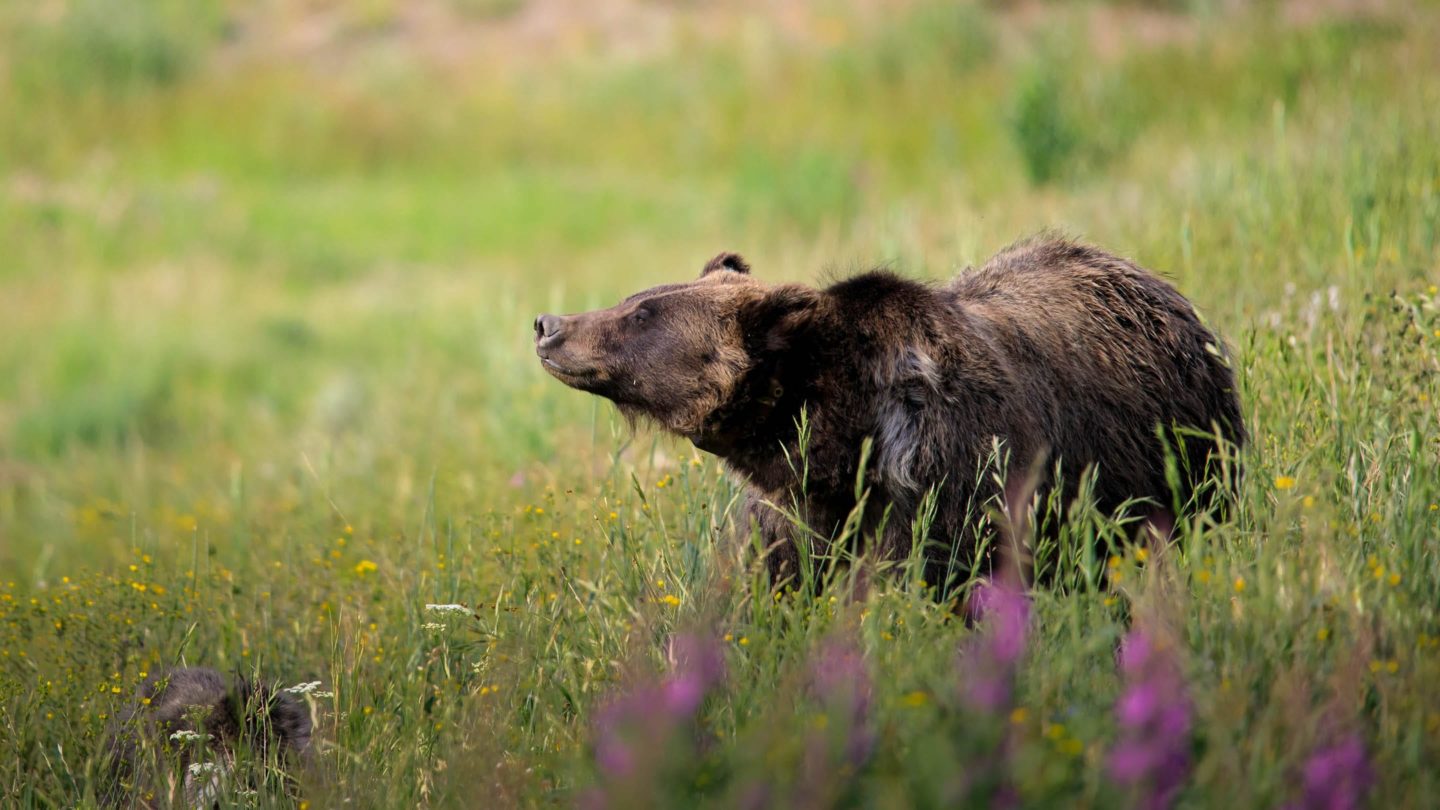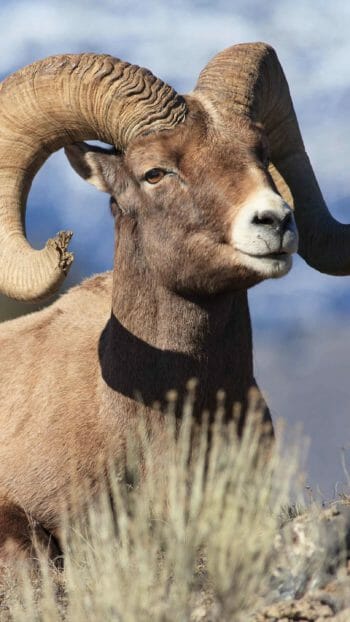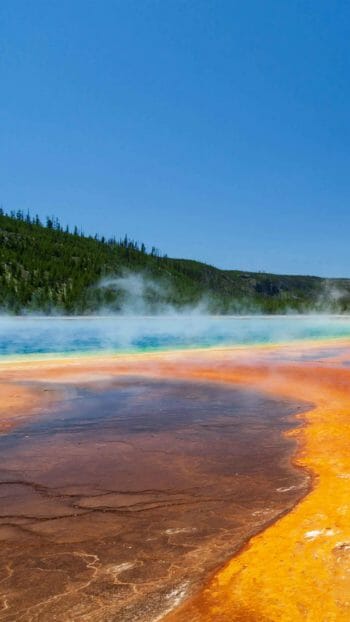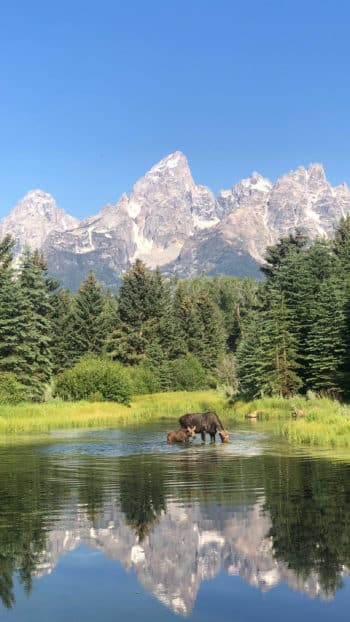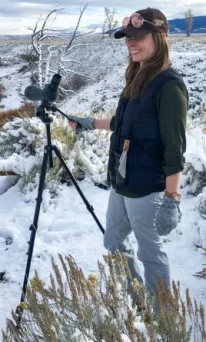Yellowstone National Park is a vast, rich ecosystem unlike any other in the lower 48, which boasts a staggering presence of megafauna in its most natural habitat. Summer is the most popular time for visitors in Yellowstone, and while the days are hot, the nights are cold. Cool mornings and evenings invite wildlife to emerge from their shelter to hunt, forage, and travel, offering viewing opportunities for those keen to spot them.
Lamar Valley is often and accurately described as the American Serengeti. If you’re looking for a landscape where you feel surrounded by possibilities of once-in-a-lifetime Yellowstone wildlife encounters, this is it. Heavily peppered with bison, regular elk herds moving through, a shy moose by the treelines, both grizzly and black bears, and wolves in their element… this valley is as wild as it gets. While some of these species are more difficult to see, this is where your chances are the highest. You’ll travel a road that follows the Lamar River between Tower Junction and the Northeast entrance; keep a sharp eye out as you never know what you might spot. Maybe even mountain goats!
Grizzly Bears
If the grizzly bear is high on your list of wildlife to find, consider coming earlier in the season. In springtime and early summer, bears are most visible, even from the road. The views are vast in parts of the park, so gear, such as a good pair of binoculars or a spotting scope, are sometimes essential for getting a good view when you find one a few hundred yards away. When you take a trip with a guide from Yellowstone Safari Company, they will provide you with these helpful tools and even get everything set up for easy viewing. Not only does this greatly increase your visual range, but it allows us to unobtrusively observe the most natural behaviors, uninfluenced by our presence. Early in the season is when you will catch the bears hungrily foraging for their first calories of the year and taking advantage of elk calving season for easy hunting. It can be a thrilling time to bear watch.

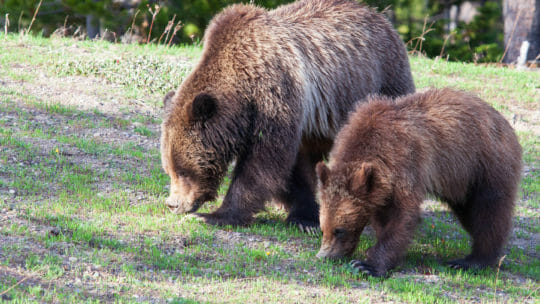
Bison
When one thinks of Yellowstone, it’s impossible not to think of the iconic bison. While we say that wildlife is never guaranteed, it would be highly unusual to tour Yellowstone without coming across at least one bison and sometimes herds of hundreds. Early summer is when you’ll see an abundance of “red dogs,” an affectionate nickname for newborn bison calves. When they are born, they are a rusty orange color and look very different from adults. Watching an adorable brand-new bison calf in a herd is always a delight as it experiences its first few days on earth.
If you want action, August is the height of the bison rut (breeding season). This is when you see the most activity amongst the bison herds. Males are following females around and bellowing their hearts out. Switch off your engine or step out of your vehicle (if a safe distance of at least 25 yards!) to hear the roaring rumble of a rutting bison herd. You may even see a fight break out, a display of the largest land animal in North America clashing together in a (sometimes fatal) test of strength. Witnessing these scenes in the sagebrush fields of our parks is nothing short of exhilarating. Rutting behavior can begin as early as mid-July and linger into October, but the most intense action is in August. A word of warning: keep an overcautious distance from the bison, particularly during the rut. Bison charges and gorings are unfortunately common, but only because people test their limits and get too close. They are far more aggressive during this time of year, so the 25-yard rule isn’t always sufficient to stay safe. Remember, your safety is your responsibility in the national parks.
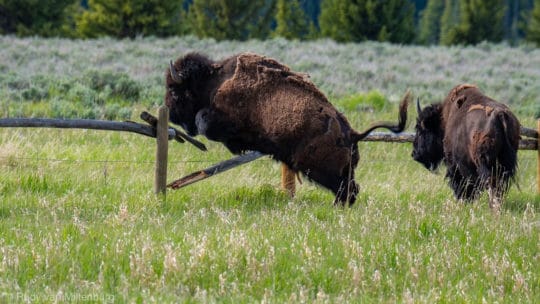
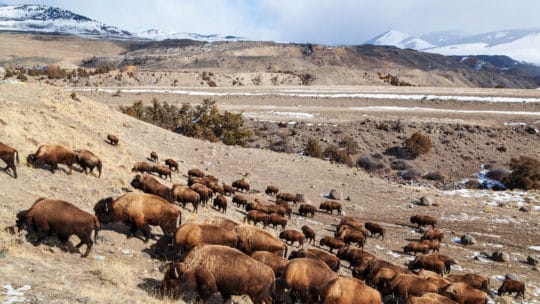
Other Critters
When people list the animals they want to see in Yellowstone, almost anyone can guess what they are. But there are many other animals amongst Yellowstone’s wildlife that you might not even know you can find. Badgers are a thrilling treat. Look away for a moment, and you might miss them. Small but robust, they are low to the ground and are easily overlooked as they bounce through the sagebrush. They are always on the move, so keeping up with one is a challenge.
River otters take viewers by surprise with their playful nature and dazzling acrobatics. Excellent at fishing, they are often munching on a snack. While a more unusual sighting, their presence is usually announced by continuous splashing in the river as they hop in and out of the water. They can vanish as quickly as they appear as they gracefully travel the river. Beavers can be seen in the same habitats of rivers and lakes, and while not as active as the otter, they are a charismatic species to observe. If you keep a sharp eye around you in the park, you’ll be surprised by what you see. Pay close attention to treelines, water edges, and anything that might be hiding in tall grasses or thick bushes. Guides can help spot the more complex, smaller wildlife with their well-trained eyes, and you may learn something about a species you thought you knew about!
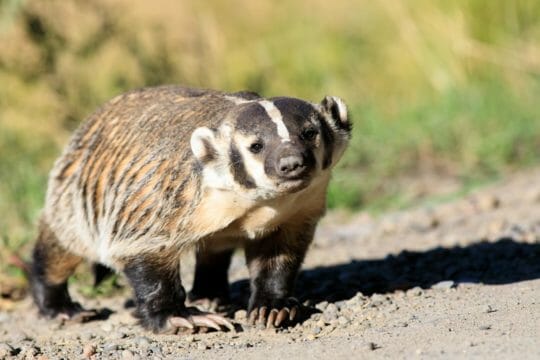
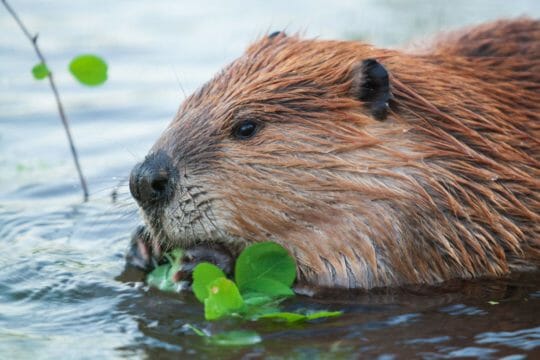
Booking a Tour With Yellowstone Safari Company
Bozeman is full of beautiful accommodations, restaurants, and shopping. One of the fastest growing cities in the US, getting here is easy with the Bozeman Yellowstone International Airport (BZN). With a private tour, your guide will pick you up from your lodging of choice, and in just over an hour, you’ll be in Yellowstone National Park. A full-day tour(8-10 hours) or a multi-day safari lets you visit two exquisite national parks. Grand Teton National Park neighbors Yellowstone and hosts abundant wildlife and uniquely stunning mountain landscapes. Thanks to the experience of our guides, going with them allows you access to the most recent information on wildlife activity. It focuses more specifically on where to look, taking you to some of the best places to find bears and other species. For four or five days, fully customizable, you can get your fill of any and every aspect of one of the largest intact ecosystems in the world with the expertise of a local who will ensure a remarkable experience. Starting from Bozeman, Big Sky, or West Yellowstone, you will stay in very comfortable accommodations around the park that will put you in the best locations during the best times of day for wildlife and take in many breathtaking landscapes and geothermal wonders.

